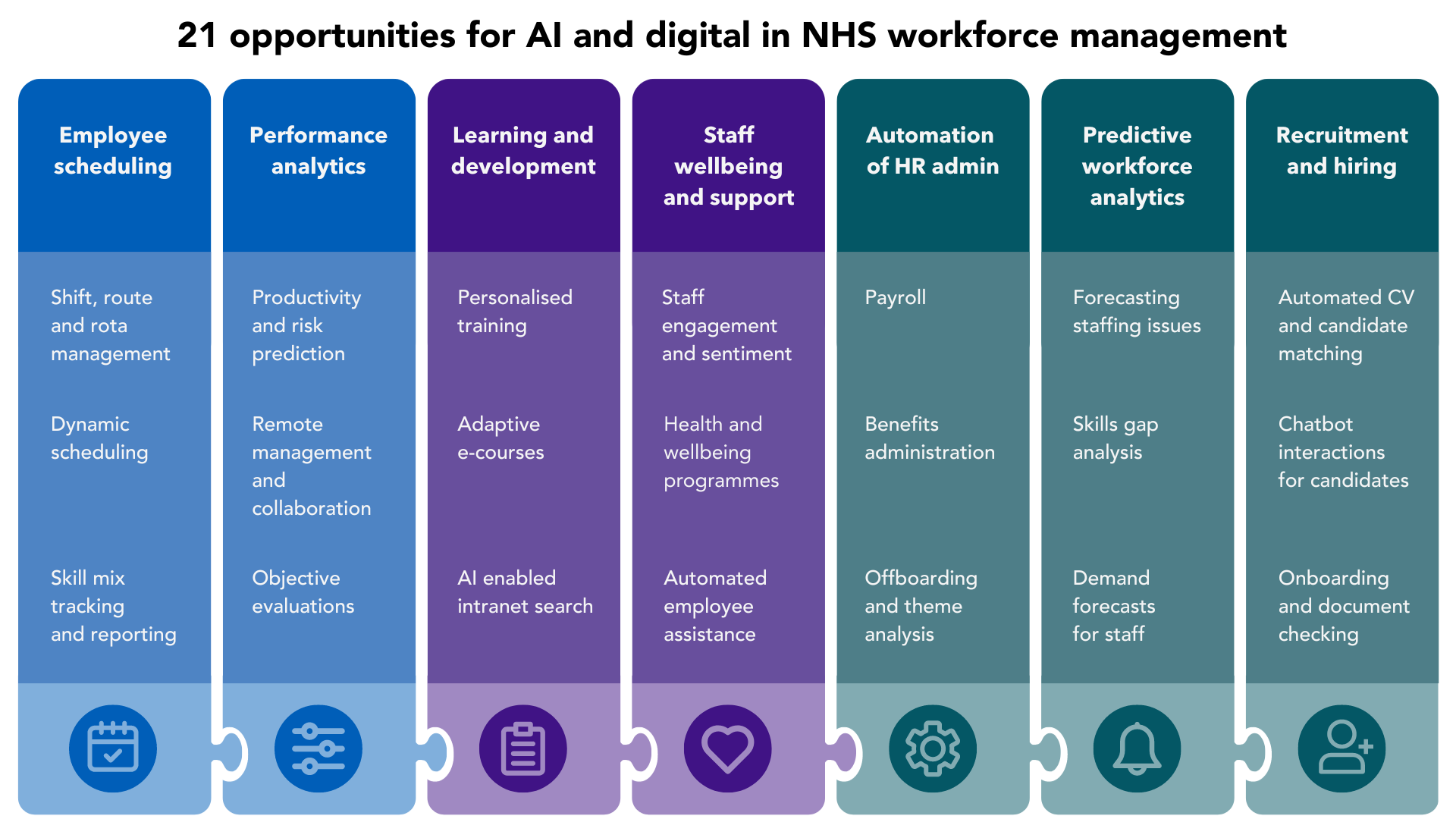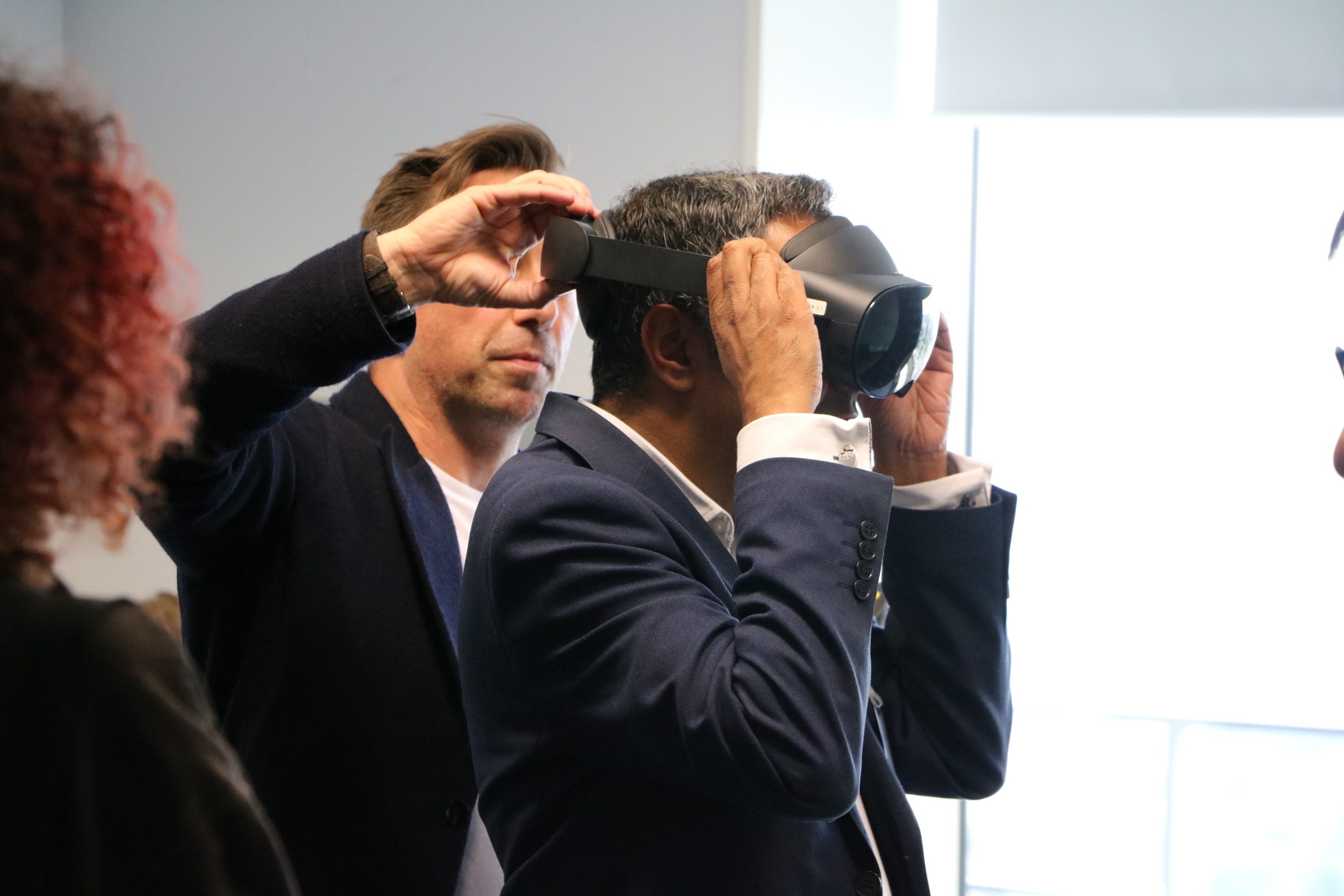Post Title
The Innovate UK Mindset-XR Innovator Support programme (delivered by the Health Innovation Network South London) aims to catalyse the development of extended reality mental health solutions to help improve the mental health of people across the UK. These solutions include technologies such as virtual reality, augmented reality, mixed reality and haptics.
While there is no shortage of possible use cases for immersive technology in mental health, aligning development plans with clinical and system priorities is important if these emerging innovations are to deliver maximum impact as quickly as possible.
Following a recent Mindset-XR roundtable event involving clinicians from across the UK, HIN Head of Mental Health Aileen Jackson reflects on the key priorities which innovators need to be aware of.
It is no secret that mental health services across the UK are under significant pressure. In England, a report into the state of the NHS published last month by Professor Lord Darzi set out the stark reality of a “perfect storm” impacting our mental health, with surging demand following the Covid-19 pandemic being exacerbated by long-term staffing issues and bottlenecks in the system.
Mental health is a key focus of the Darzi report, being mentioned more than 100 times. For those who have worked within the system for some time, many of the statistics highlighted by Professor Lord Darzi around unacceptable waiting times and the increasing prevalence of mental ill-health are shocking, but not unsurprising.
Indeed, part of the rationale behind the Innovate UK Mindset-XR programme which we deliver is that mental health as a sector could benefit considerably from transformational change. Tweaking and tinkering with existing approaches simply isn’t going to make the difference that is needed.
But with so many challenges and complexities to navigate, where should extended reality innovators start if they want to maximise their positive impact on the mental health of the UK?
Our Mindset-XR programme recently brought together senior clinicians from a variety of specialties and settings to discuss this question, amongst others. From those discussions, we saw three key themes emerging for innovators to bear in mind:
Whittling down waiting lists
By April 2024, more than a million people in England were on waiting lists for mental health services. Waiting times for diagnosis or treatment in Scotland, Wales and Northern Ireland have also increased significantly in recent years.
We know that the longer people have to wait to access the right mental health treatment, the worse their health outcomes. 80% of people experience a decline in their mental health while waiting for treatment.
The converse is also true; we know from the HIN’s work supporting FREED, an early intervention model for eating disorders, that speeding up access to diagnosis and treatment improves long-term health outcomes and saves the NHS millions of pounds.
Figuring out how to reduce the number of people waiting for assessment, diagnosis or treatment is a top priority for almost all mental health clinicians, services and commissioners. Addressing a bottleneck in a system is a sure-fire way to get stakeholders to pay attention to your innovation. During the roundtable, we heard about two clinical areas which could be a particularly good fit for immersive technologies:
• Children and young people’s mental health. Record levels of children and young people are seeking support with their mental health, with a rise in contacts with Child and Adolescent Mental Health Services (CAMHS) of 93% between 2019 and 2023. This in turn has led to significant backlogs; more than 250,000 young people were waiting for support in March 2024. Given the ubiquity of digital technology in young people’s lives already, this group may be especially receptive to the use of immersive innovations during diagnosis or treatment of mental health conditions.
• Autism and ADHD. Greater understanding of neurodiversity has led to a surge in people looking for conclusive diagnoses for autism and Attention Deficit Hyperactivity Disorder (ADHD). In the context of wider pressures on the system and a lack of general capacity, this increased demand has overwhelmed services and led to enormous waiting lists for diagnosis – with some reports of waits of up to 8 years for ADHD assessments. Any innovation with the potential to help increase the capacity to screen or assess patients is likely to be of great interest to services.
Supporting the workforce
Despite increases in the overall headcount of professionals working in mental health in recent years, it is widely acknowledged that the workforce presents the largest and most profound challenge to delivering against national mental health ambitions.
In September 2023, almost one in five mental health roles was vacant, with particular shortages in nursing roles. NHS mental health staff in England consistently report understaffing as a significant issue in the yearly NHS Staff Survey.
Overall staffing numbers are not the only issue, with gaps in senior psychiatry expertise emerging in some regions.
As with the issue of waiting times exacerbating underlying health conditions, these staff issues also create a vicious circle; the more stress and additional workload is placed on staff, the greater the impact on staff retention and sickness rates, and the worse conditions become for those remaining.
For innovators, two lessons to bear in mind are:
• The importance of helping clinicians save time. Innovations which allow clinical staff to do more with their limited time have the potential to improve the overall efficiency of the system.
• Recognising time as a barrier to implementation. Staff working in mental health services do not have the time to spend learning complex new systems or working through glitches in technology. Optimising usability and accessibility is key to get staff bought in to the potential of your innovation.
Health inequalities: leaving nobody behind
Some groups of society are significantly more likely to experience mental illness. Some groups are less likely to receive high-quality mental health care. Some – such as some people from the global majority – experience both of these types of inequalities.
Without careful planning and consideration, any technology-based innovation has the potential to worsen health inequalities. For example, it is not difficult to imagine how an NHS service switching to delivering some of their care using an app or digital platform might risk excluding people with lower digital literacy. Often people more likely to be affected by digital exclusion (such as older adults or people experiencing homelessness) also experience other forms of health inequalities.
For mental health services to invest in innovation, they need to be confident that the platform, tool or service provided is going to be effective across their service user population. Innovations which fail to consider digital literacy, socioeconomic factors or cultural appropriateness are unlikely to help them reach the groups in the greatest need.
For innovators, this means involving a diverse range of people with lived experience in the design and development of their innovations is crucial. This process should begin as early as possible; an innovative solution designed in true partnership with those affected by a particular mental illness is likely to be a much more compelling proposition for clinicians and commissioners than something created in isolation.
We are proud to be supporting innovators as part of the Mindset-XR programme who are already tackling some of these priority areas. If you would like to keep up to date with the latest insights from clinicians, commissioners and innovators focused on extended reality innovations in mental health, please do sign up to our newsletter.
Want to know more about the Mindset-XR Innovator Support Programme?
Access all our resources including blogs, webinar recordings and e-learning modules on our dedicated web pages
Click here






